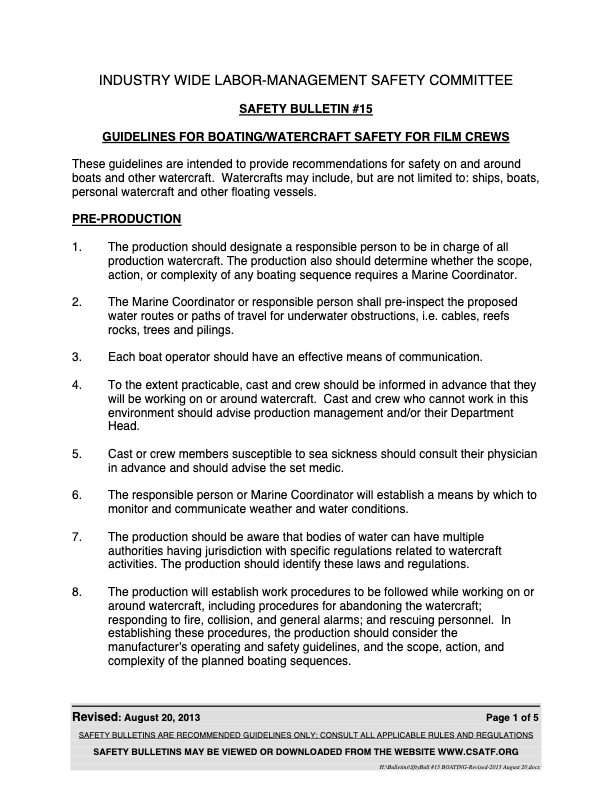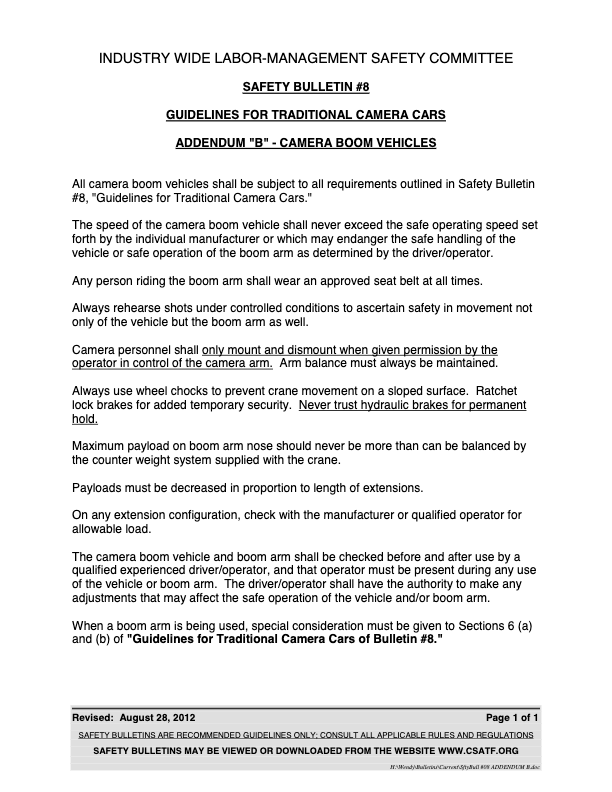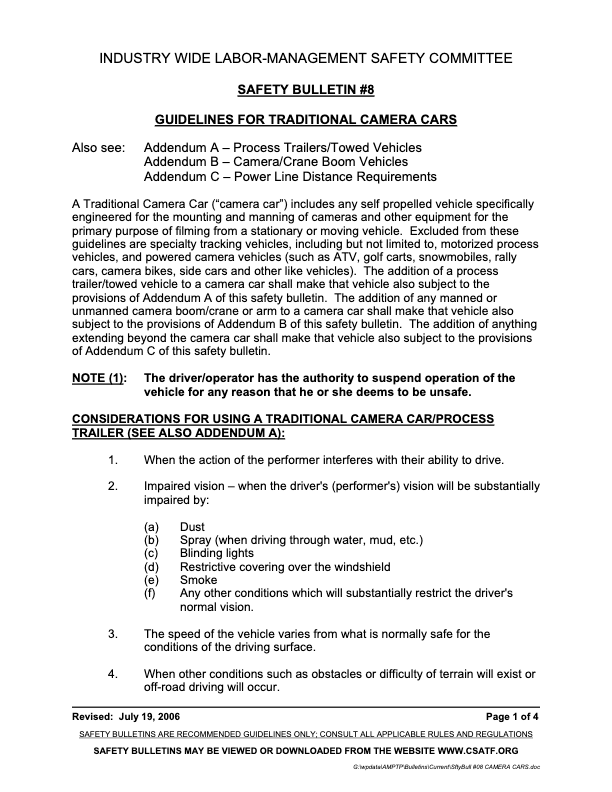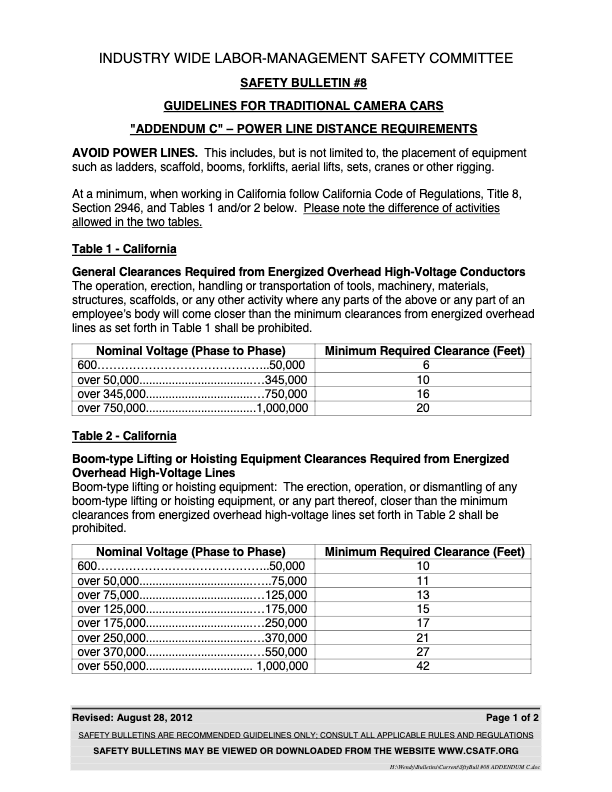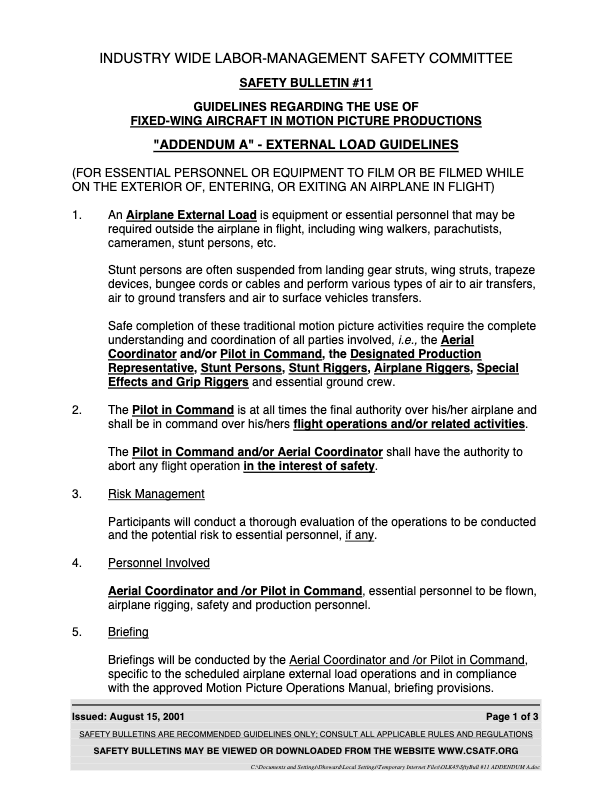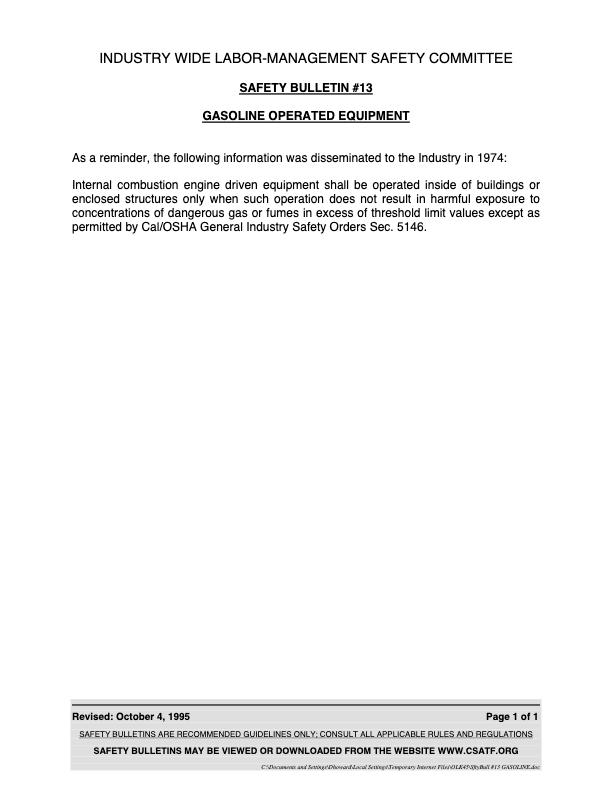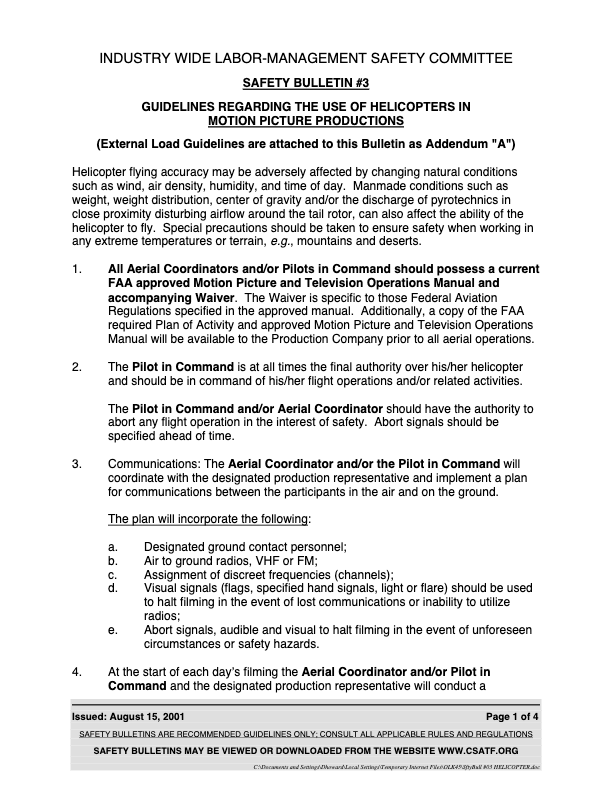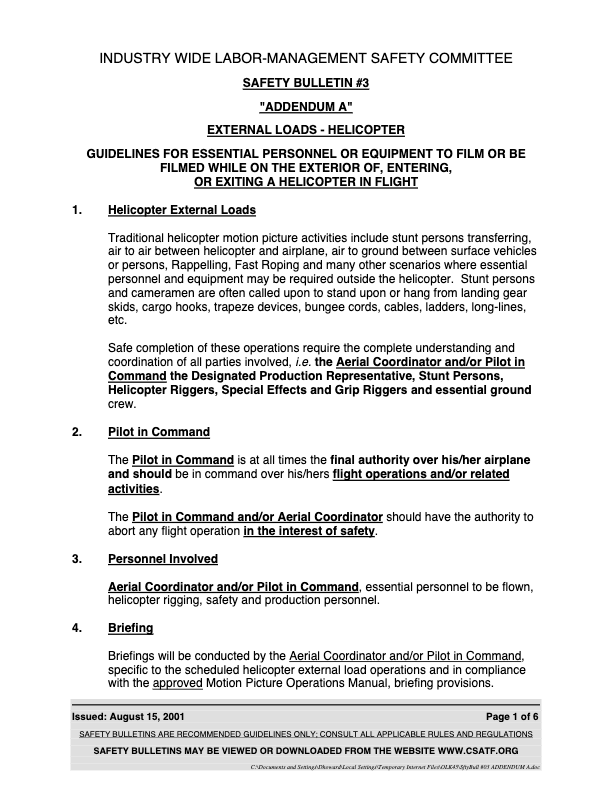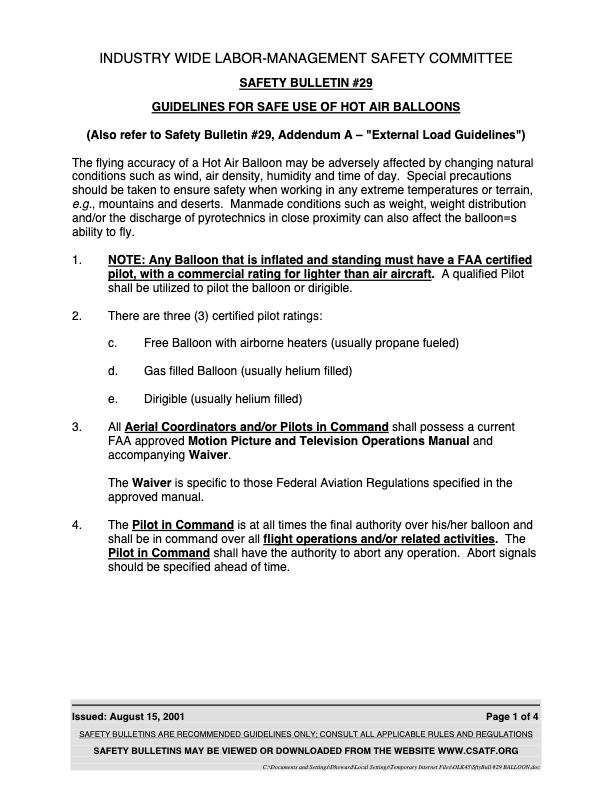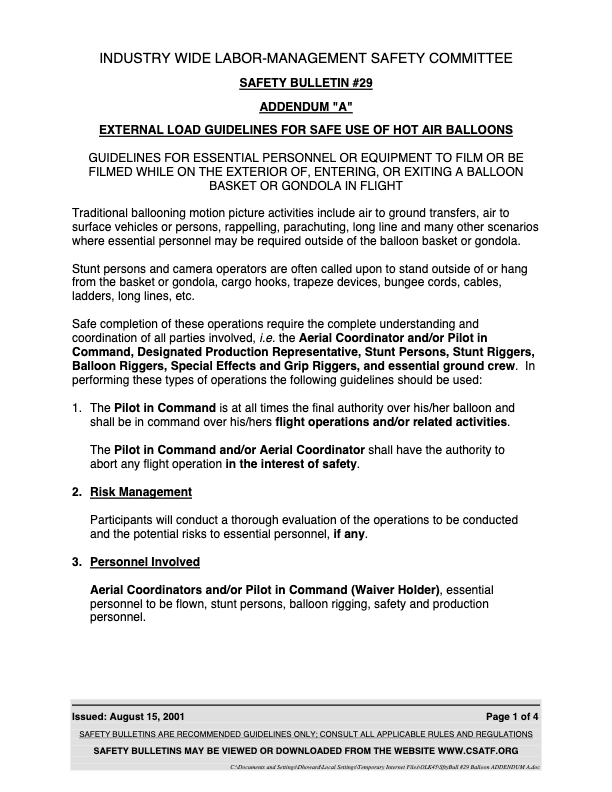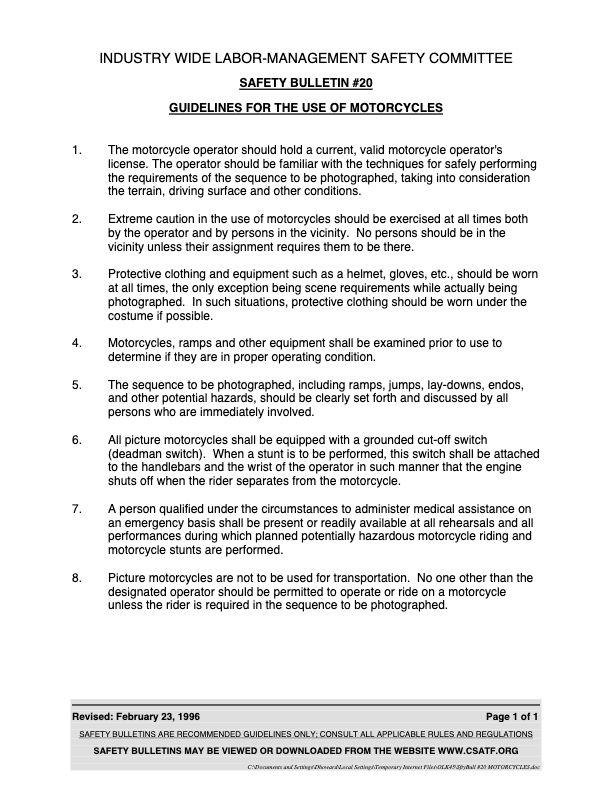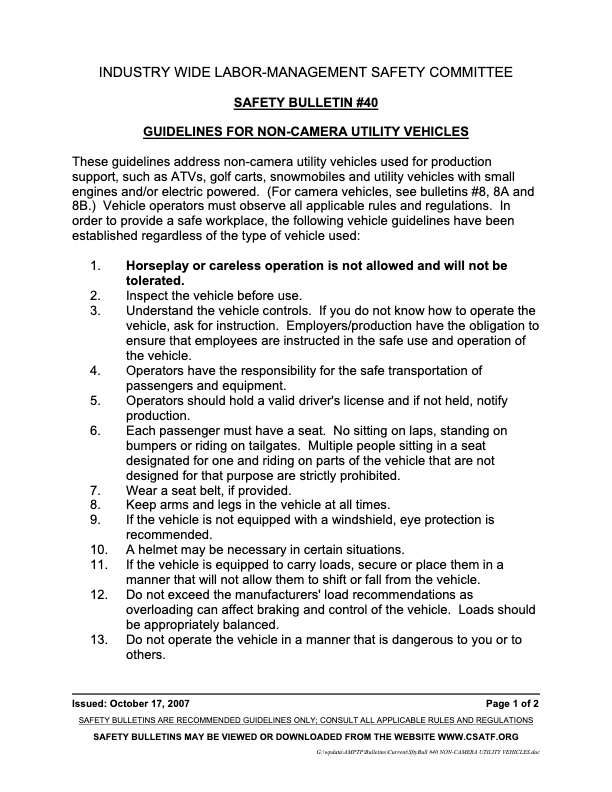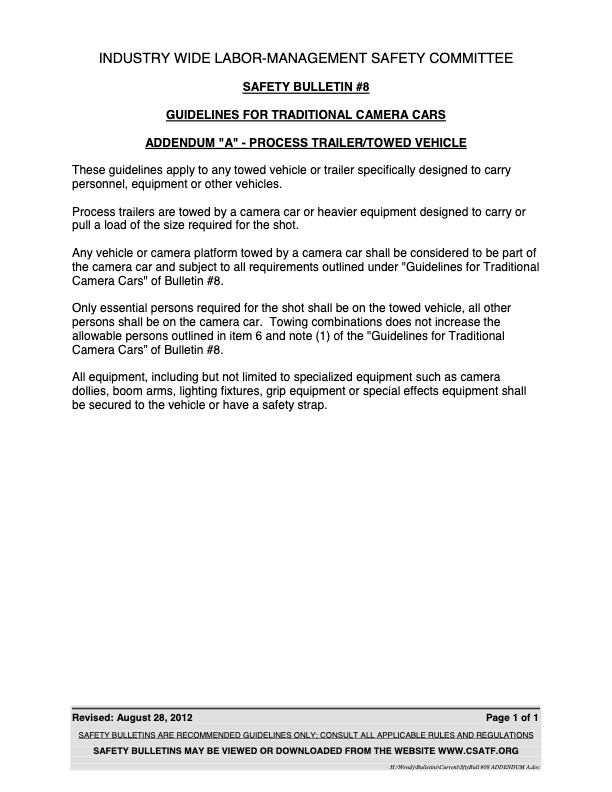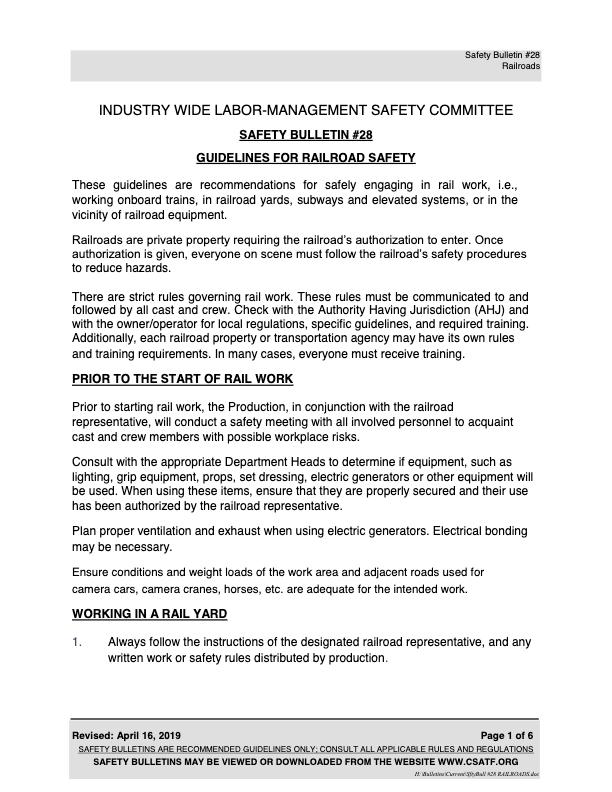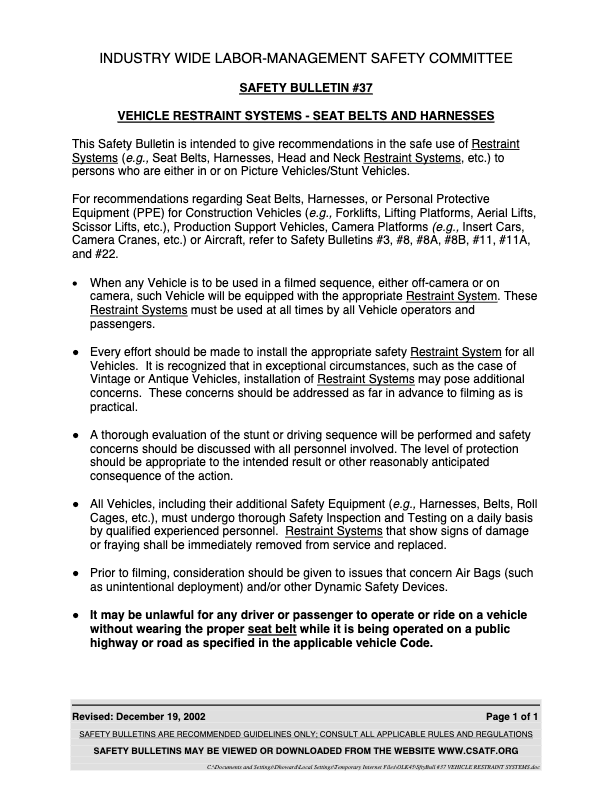Safety Bulletin
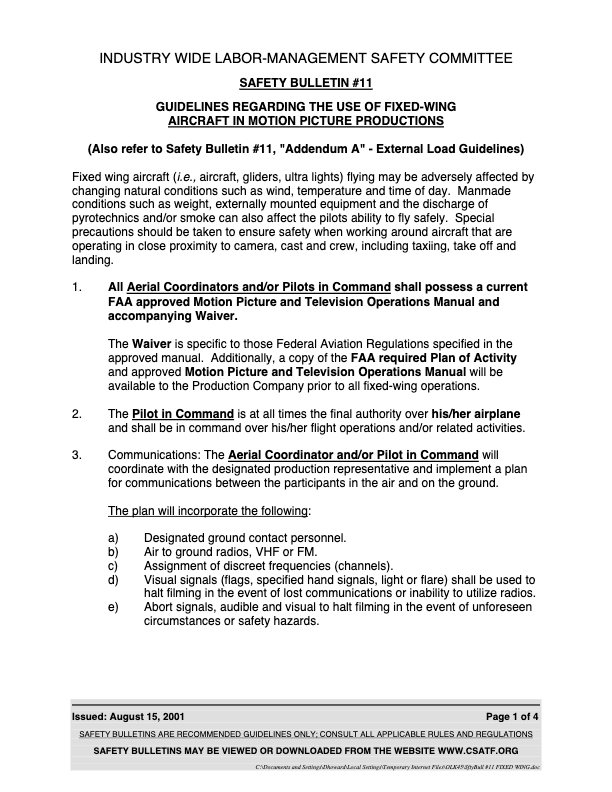
Guidelines
Fixed wing aircraft (i.e., aircraft, gliders, ultra lights) flying may be adversely affected by changing natural conditions such as wind, temperature and time of day. Manmade conditions such as weight, externally mounted equipment and the discharge of pyrotechnics and/or smoke can also affect the pilots ability to fly safely. Special precautions should be taken to ensure safety when working around aircraft that are operating in close proximity to camera, cast and crew, including taxiing, take off and landing.
- All Aerial Coordinators and/or Pilots in Command shall possess a current FAA approved Motion Picture and Television Operations Manual and accompanying Waiver. The Waiver is specific to those Federal Aviation Regulations specified in the approved manual. Additionally, a copy of the FAA required Plan of Activity and approved Motion Picture and Television Operations Manual will be available to the Production Company prior to all fixed-wing operations.
- The Pilot in Command is at all times the final authority over his/her airplane and shall be in command over his/her flight operations and/or related activities.
- Communications: The Aerial Coordinator and/or Pilot in Command will coordinate with the designated production representative and implement a plan for communications between the participants in the air and on the ground. The plan will incorporate the following:
- Designated ground contact personnel.
- Air to ground radios, VHF or FM.
- Assignment of discreet frequencies (channels).
- Visual signals (flags, specified hand signals, light or flare) shall be used to halt filming in the event of lost communications or inability to utilize radios.
- Abort signals, audible and visual to halt filming in the event of unforeseen circumstances or safety hazards.
- Necessary Crew and Persons Authorized: Flight operations closer than 500 feet to persons will include only those persons consenting to be in close proximity to the aircraft and who are directly involved and necessary for the filming. The Aerial Coordinator and/or Pilot in Command and the designated production and security personnel will maintain an area perimeter to insure that no authorized persons are allowed within 500 feet of the flight operations.
- A preplanned stunt or special effect sequence will not be changed in any way without the authorization of the Aerial Coordinator and/or Pilot in Command.
- At the start of each day’s filming the Aerial Coordinator and/or Pilot in Command and the designated production representative will conduct a briefing/safety meeting for the production staff of those persons necessary for filming, including emergency, safety and security personnel. A subsequent briefing/safety meeting may also be required as necessary for an intended action. Both meetings shall include the following:
- Pertinent items and the special provisions of the Aerial Coordinator and/or Pilot in Command(s) Motion Picture and Television Operations Manual and accompanying Waiver along with any additional provisions issued by the local FAA Flight Standards District Office.
- Possible risk to personnel that are involved.
- Safeguards to personnel and equipment.
- Communications.
- Emergency procedures.
- Location of boundaries.
- Local governmental limitations or restrictions, if any.
- The Aerial Coordinator and/or Pilot in Command shall designate one person as the Ground safety contact with no other responsibilities.
- If there is a question as to safety of any aerial filming sequence involving low, over-the-camera shots, a briefing/safety meeting shall be held between the Aerial Coordinator and/or Pilot in Command and concerned persons as to whether the use of a locked-off camera is necessary.
- Aircraft engines shall not be started and the aircraft shall not be taxied in spectator, cast or crew areas unless appropriate measures are taken to preclude creating a hazard to spectators, cast or crew.
- Cast, crew and equipment shall be protected from debris thrown back by airplanes taxiing out or taking off.
- If an aircraft is being filmed with the engine running, adequate safety precautions shall be taken in connection with activity in front of the propeller, which includes designated ground personnel.
- No smoking is permitted within one hundred feet (100′) of the aircraft or fuel support truck.
- Aircraft structures can be damaged easily while on the ground. Never push, handle, sit on or in, or lay any objects of any kind on an aircraft without the pilot’s permission.
- If a foreign object falls into or against an aircraft, report it immediately to the Aerial Coordinator and/or Pilot in Command.
- Each end of an operational runway or landing area should be cleared during take-off and landing and appropriate safety precautions should be taken as to the placement of camera equipment when filming the take-off or landing.
- Low level acrobatic maneuvers shall be conducted in a direction, which will most nearly parallel the boundaries of the designated crew and equipment area or in a direction away from such areas.
- When working on location or utilizing Department of Defense aircraft, local agencies, regional police, fire, or park department regulations or military guidelines may vary from this bulletin. The more stringent guidelines will always be in effect. Additionally permits may be required for landing or refueling operations.
- The production company must notify all cast and crew members and the front of the studio call sheet shall contain a statement to the effect that: “An aircraft is being used and will be flown in close proximity to crew and equipment. Anyone objecting will notify the production manager or 1st AD prior to any filming.”
- Except where necessary for takeoff or landing, the FAA prohibits the operation of an aircraft below the following altitudes:
- Over Congested Areas: Over any congested area of a city, town or settlement, or over any open- air assembly of persons, an altitude of 1,000 feet above the highest obstacle within a horizontal radius of 2,000 feet of the aircraft.
- Over other than Congested Areas: An altitude of 500 feet above the surface, except over open water or sparsely populated areas. In that case, the aircraft may not be operated closer than 500 feet to any person, vessel, vehicle or structure.


